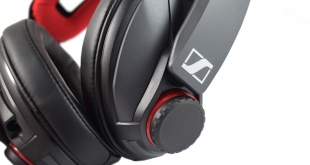
Sennheiser is a brand that has a very good reputation in the high-end audiophile market, but it has found it hard to transfer that success into the gaming market. Today, we look at the GSP 350 – a £120 gaming headset that Sennheiser will hope can finally establish the brand as a real alternative to the likes of Razer, Corsair or HyperX. But just how good is it?
Priced at £119.99, the Sennheiser GSP 350 isn't the cheapest gaming headset around, but nor is it the most expensive. Still, for the money we would expect good comfort levels, solid build quality and – most importantly – great audio quality. It will also be interesting to see what extras we get when compared to the GSP 300, the smaller brother to the GSP 350. So, without further ado, let's get right into the review.
Specification
General Data
- Ear coupling: Circum-aural
- Transducer principle: Dynamic, closed
- Cable length: Surround Dongle cable 1.7 m / USB extension cable 1.2 m
- Connector plugs: USB
- Delivery includes: GSP 350 gaming headset, USB Surround Dongle cable, USB extension cable, Quick Start Guide, Safety Guide
- Compatibility: PC
- Warranty: 2 years
Headphones
- Frequency response: 15–26,000 Hz
- Impedance: 19 O
- Sound pressure level: 113 dB
Microphone
- Frequency response: 10–24,000 Hz
- Pick-up pattern: Noise-cancelling
- Sensitivity: -41 dBV/PA
The Sennheiser GSP 350 ships in a clean, white box. On the front there is a large product photo as well as some Sennheiser branding.
The only included extras are two small booklets – one safety guide and one quick-start guide.
Getting our first look at the headset itself, it is immediately clear that Sennheiser has reused the design of the GSP 300 for the GSP 350 – the only difference is the colour scheme, as the GSP 350 is black and red, rather than black and blue. It keeps the same all-plastic construction, too.
On the topic of build quality, I do think the plastic exhibits a bit too much flex for my liking, especially considering the price. After all, the Razer Kraken 7.1 V2 costs £20 yet sports an aluminium frame, and that headset feels much more sturdy in the hand.
Moving in for a closer look, the ear cups are oval shaped and closed back in design. The foam cushions are covered with faux-leather, though they are removable so you could try using your own cushions if you prefer.
The back of the cups are made from plastic, while the right ear cup also sports a large volume wheel.
The GSP 350's headband is well padded with more foam, though the cushioning is covered with fabric this time, rather than faux-leather.
Adjusting the size of the headband is easy, just pull the headband up until you find the desired size. There are notches on the side of the band so you can get both sides to the same point.
Moving on, the mic is non-detachable, though it can be rotated up and out of view when it is not in use, something which also mutes the mic. It is also noise cancelling, but we will talk more about sound quality on the next page.
Lastly, the cable situation is worth touching on. The cable on the left uses a 2.5mm jack to connect to the headset, while it ends with the 7.1 surround-sound dongle. The cable on the right connects to that dongle via micro-USB and eventually plugs into your PC with a standard USB Type-A connector.To test the GSP 350, I used it for a couple of weeks. During this time, I used it primarily while gaming, but also while listening to music and watching videos.
Let's start with a look at the software:
The GSP 350 software is very basic and covers just three areas – EQ, mic noise reduction and mic sidetone. The EQ tab only gives you a choice between three pre-configured presets, or ‘off', which is certainly not very sophisticated. I would have much preferred a graphic EQ to give users finer control over the sound.
Still, software is only a minor part of the headset, so let's talk about what it is like using the GSP 350 on a day-to-day basis.
Starting with comfort, I immediately noticed that I had to adjust the headset to its largest size, which is very unusual for me as I typically only make small adjustments to the size of each headset that I review. If I had the GSP 350 any tighter, it simply was not comfortable and the ear cups would not fit around my ears. This does concern me as my head is really far from large – I would describe its size as ‘very average', so I do worry that those with heads at the larger end of the spectrum may simply be unable to wear this headset.
That aside, the padded headband is nice and soft, while the ear cushions fit around my ears very well. I am not too happy with the faux-leather ear cushions, though, as I find I get very hot while using faux-leather cushions. Ideally, considering the price, Sennheiser should have given end-users the option by having a second pair of cushions included in the box, but that is sadly not the case here.
However, when we get to sound quality, things do pick up. The GSP 350 is probably one of the best-sounding headsets I have used over the years, for multiple reasons.
I'll start with the bass, as it is definitely present and hard to miss – unlike the Sennheiser Game Zero headset that I have used, which is very light on the bass. Not with the GSP 350, though – the low-end is punchy and tight, but still very well contained, meaning it does not spill over and ‘muddy up' the mids or highs.
Those mids are also quite full and rich, while the treble is similarly crisp and adds a lot of detail when compared to other gaming headsets. When gaming, all of that creates a very enjoyable sound – the bass gives impact to explosions and gunfire, while the mids and highs are still there to allow you to hear your teammates and pick out footsteps.
Moving on, we must discuss the virtual 7.1 surround as this is a big reason to go for the GSP 350 over its little brother, the GSP 300. With that in mind, I dived into titles like Star Wars Battlefront and Ghost Recon: Wildlands to see what the virtual surround is like. Unfortunately, it is not a very good implementation of virtual 7.1 as the sound immediately loses all clarity and becomes a jumbled mess of reverb and slight distortion. This is definitely unfortunate as the surround-sound is perhaps the biggest difference between the GSP 350 and the GSP 300, so the fact that it is pretty poor makes the GSP 350 a tough sell given its increased cost.
Elsewhere, I must also touch on the mic. I tried using the mic with noise cancelling on and off, and overall I feel that the quality is much improved with the noise cancelling turned off. This is because the noise cancelling algorithm just clips the ends of the words you speak, meaning speech sounds a bit unnatural and almost jilted. Everything sounds more natural and less robotic with the technology turned off, though more background noise does come through.
So, while the mic quality is definitely good – if not incredibly amazing – it is incredibly quiet. This is something we initially mentioned in our GSP 300 review, and it does not seem to have changed. Recording myself talking at a normal volume, with the mic level set to 100 in Windows, resulted in a clip that was barely audible – even when I turned the headset volume up to the max. While gaming I may as well have not been there as my team mates really struggled to hear me. Overall, this is a poor show from Sennheiser and something that needs immediate rectification.
My last point of criticism is the cable situation. The GSP 300 uses standard 3.5mm jacks with a y-splitter included, and can therefore be used on multiple platforms – consoles, PC, laptops, smartphones, whatever. Unfortunately, for the GSP 350, Sennheiser decided to implement two cables (above), with one going from the headset to the surround-sound dongle, and another from the dongle to your PC. This means you can't use the headset with anything other than a PC – as there is no 3.5mm jack to be seen. Clearly, this must've been done to allow for the 7.1 dongle, but there is still no need to completely remove support for other devices.
What Sennheiser should have done – and what HyperX did with its Cloud Revolver S – is to first use a cable which ends in a 3.5mm jack, and have that connect to the 7.1 dongle, instead of having the dongle on the end of the first cable. That way, users can still get virtual surround-sound without losing the ability to use the headset with their phone or games console.On the whole, while the Sennheiser GSP 350 may be an excellent-sounding gaming headset, it is essentially impossible to justify the extra cost over the GSP 300.
This is because the two headsets are very similar – they both have the same plastic construction, which admittedly could be better, the same ear cups and the same core drivers.
Getting to the differences, first and foremost is the price. The GSP 300 costs around £80, the GSP 350 is £120. So what do you get for that extra money? In a nutshell, virtual surround 7.1 (with the accompanying software) and a different cable.
The trouble is, the virtual surround-sound is very poor – it removes all detail and clarity from the sound, leaving a big mess of noise behind. To be clear, I really enjoyed the GSP 350 with 7.1 turned off, but I really wouldn't pay extra for the virtual surround.
The cable situation is similarly frustrating. The GSP 300 can be used across multiple platforms out-of-the-box, but the GSP 350 can only be used with a PC unless you buy a separate cable from Sennheiser. To me, that means you are getting less functionality for more money which is very hard to stomach. To add insult to injury, Sennheiser want you to spend more money on a new cable for the GSP 350, just to be able to use it with other devices – something the GSP 300 can do anyway, and that headset costs £30-40 less.
In short, I really can't recommend the Sennheiser GSP 350 when we compare it to its little brother. Its sound quality is very good, yes, but there's no way anyone should be spending more money for the GSP 350's poor 7.1 surround and lack of multi-platform support when the GSP 300 can be had for less.
You can buy one from Overclockers UK for £119.99 HERE.
Pros
- Very good sound quality.
- On-ear volume wheel.
- Flip-to-mute mic.
Cons
- Requires an extra cable for multi-platform use.
- 7.1 surround is very poor.
- Really not worth the extra cash over the GSP 300.
KitGuru says: When compared with the GSP 300, in my mind there is essentially no reason to spend the extra cash on the GSP 350.
 KitGuru KitGuru.net – Tech News | Hardware News | Hardware Reviews | IOS | Mobile | Gaming | Graphics Cards
KitGuru KitGuru.net – Tech News | Hardware News | Hardware Reviews | IOS | Mobile | Gaming | Graphics Cards


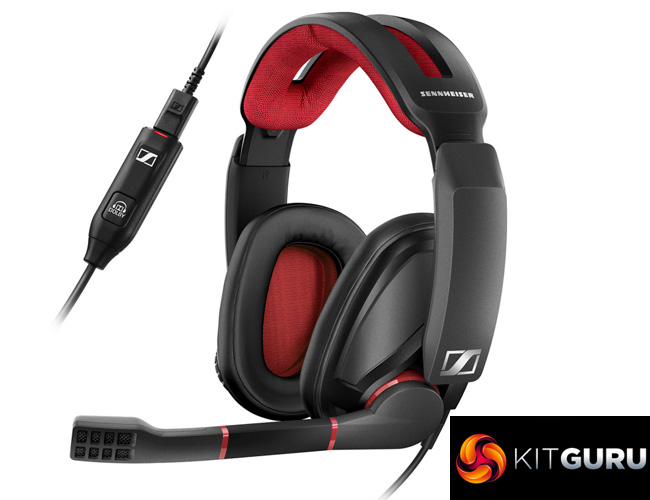
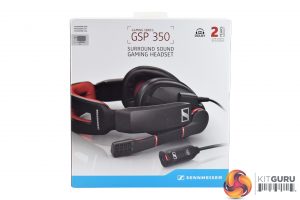
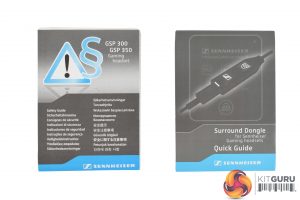
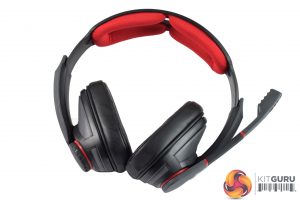
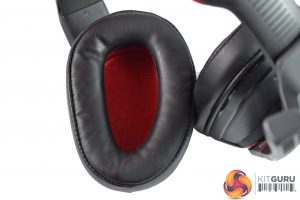
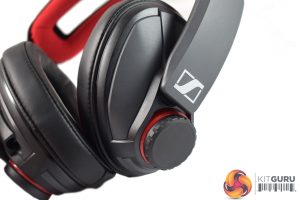
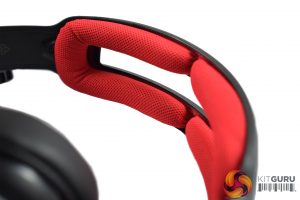
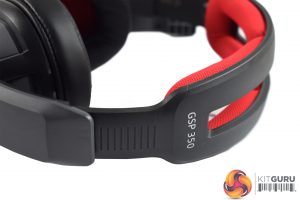
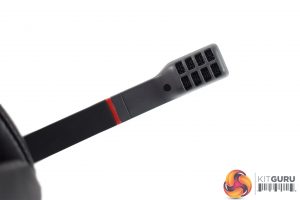
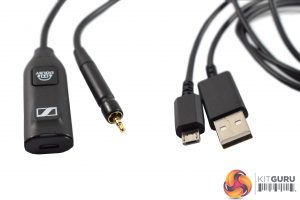



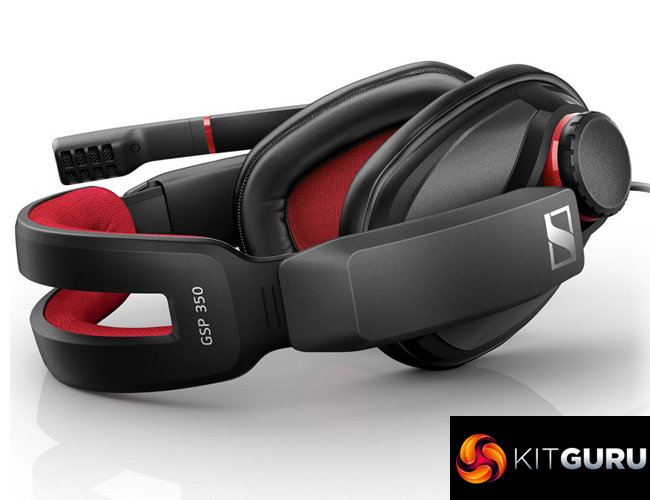

Seriously, “Ear coupling: Circum-aural” Plain English not good enough for you guys?
We copy specs directly from the manufacturer – what Sennheiser write, we include verbatim just as a point of reference.